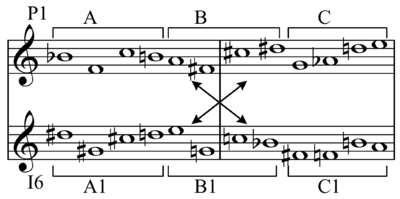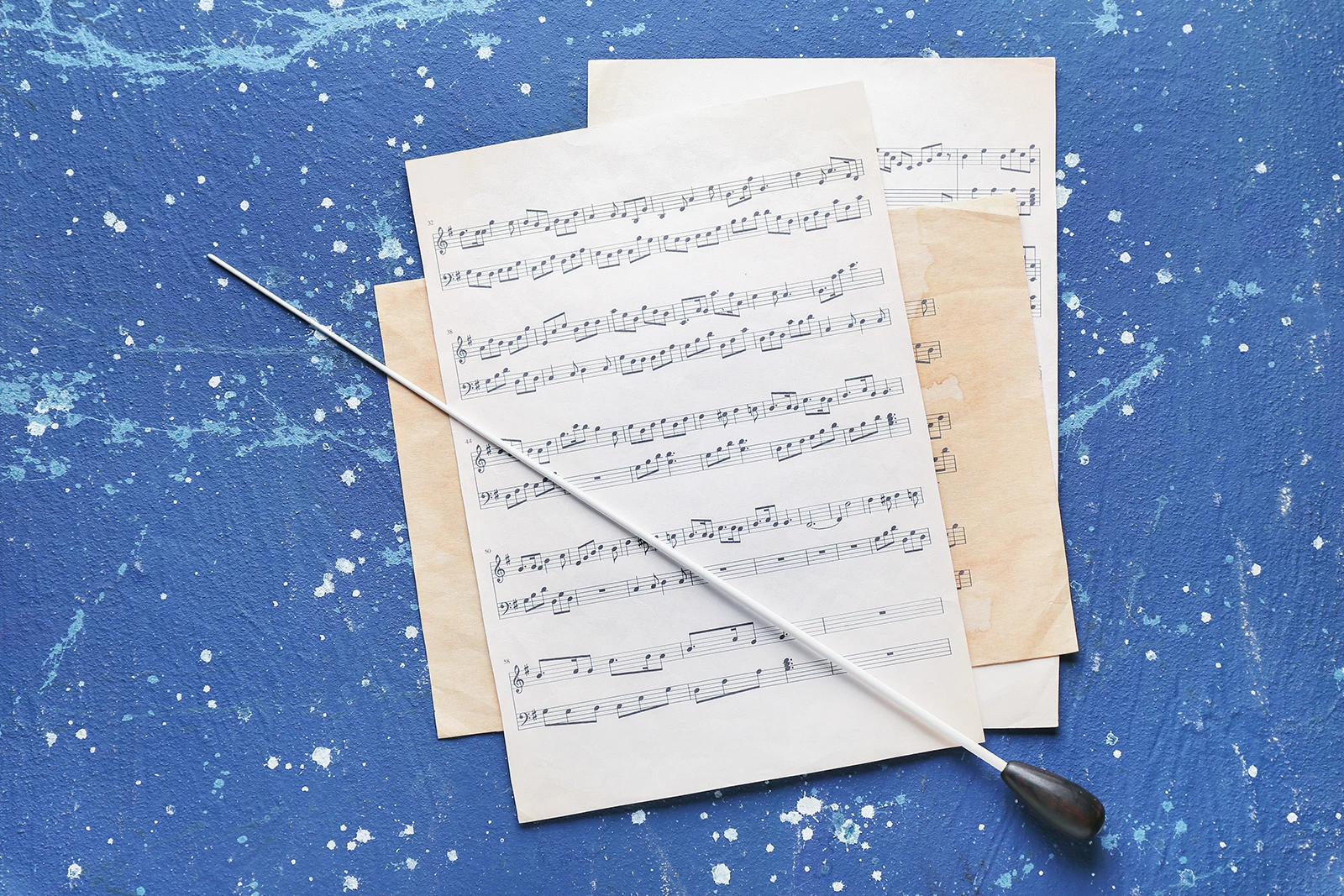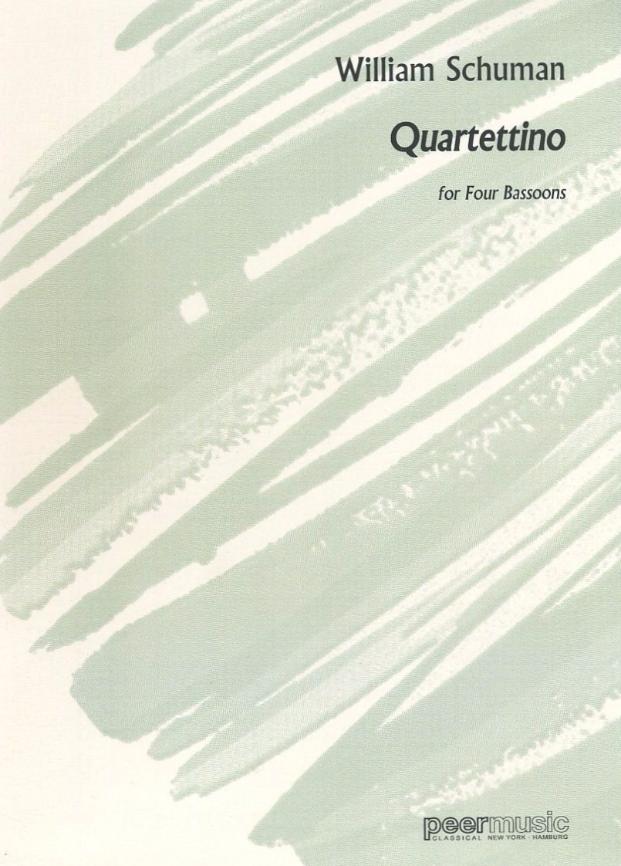Greetings from rainy Indiana, PA! If you are anything like me, you are putting holiday decorations away, going back to school, and there is this growing pile of scores on your desk just waiting to be studied. Let’s dig in!
Before I begin part II of this article, I would be remiss if I did not give full credit and admiration for the two gentlemen that imparted these score study techniques to me: Jack Stamp from Indiana University of Pennsylvania, and Eugene Corporon from the University of North Texas. My musical and personal life would have been very different if I had not met these two gentlemen – I dedicate this article to all that they have given me over the years, and thank them profusely for their unending support. I would also like to give credit to a wonderful text that all band directors should try to get their hands on as soon as possible: Guide to Score Study by Robert Garafolo and Frank Battisti. This book belongs in the library of every instrumental music educator for its wealth of wisdom and clarity of thought.
When I begin looking at a score, the process by which I initially absorb information is a process that my teachers call score reading, as opposed to score study. The purpose of score reading is to gain a broad overview of the work without getting bogged down with too many details. To put this process into context, score reading is a lot like looking at a map of New York City while score study will occasionally have you look the bug on the windshield of a taxi in Times Square! During this process, Battisti and Garafolo recommend that you take note of the following:
Title – some titles can predict a composer’s use of form while others are more programmatic in nature
Composer – this can set an expectation for what you are about to hear
Editor/Arranger/Transcriber – is this originally for band / was this work ever revised
Dedication and/or Commissioning Ensemble
Publisher/Date of Publication/Performance Time
Program Notes – many composers now provide informative information about their work
Transposed Score or Score in C
Unusual Instruments – do you need alto flute, piccolo in Db, etc.
Special Demands – flutter tonguing, multiple mutes for brass, etc.
Meter Changes
Tempo Changes
Special Notation – ex. Daniel Bukvich Symphony No. 1 – In Memoriam Dresden
Once you have absorbed all of this information, the actual process of score study can begin. As tempting as it is to immediately grab a pencil/pen/marker and begin marking a score when you open the cover for the first time, spending some time with a score getting a broad overview will provide context for the conscious choices made by the composer.
Marking a Score
Marking a score is a highly individual process. Some conductors like to purchase two scores – one for marking and one to conduct from. Some conductors contend that you shouldn’t mark a score at all, and everything in between. The purpose of this article isn’t necessarily to promote one method above another. Instead, it is to offer two pathways to learn a score and let the conductor use (or not use) these methods towards a system that works for them and their ensemble.
The first system that I am going to discuss I learned from Eugene Corporon at the University of North Texas. He uses a series of three colored pencils that highlight the following:
Red
- Melody/Primary Line
- Crescendo (traditional < symbol in the upper margin showing the pacing of the change)
- Accelerando (arrow pointing to the right in the upper margin showing the pacing of the change)
- Pitched Percussion, particularly when they are playing/augmenting the melody
Blue
- Harmony/Secondary Line
- Diminuendo (traditional > symbol in the upper margin showing the pacing of the change)
- Ritardando (arrow pointing to the left in the upper margin showing the pacing of the change)
Green
- Tertiary Line
- Non-pitched percussion
- Meter Changes
- Changes in form/arrival points
- Marking off divided staves in French Scoring
- Highlighting Codas/Repeated Sections
At the beginning of this process, I take a considerable amount of time to mark the formal design of the music I am working with. I am often reminded of a quote by Maurice Ravel when someone asked how a new composition of his was coming along. He stated that since he had finally figured out the form of the work, the actual composition would quickly follow. I have found in my own experience that I if I am able to learn the overall structure of a work, the smaller details become easier to internalize and recognize. In fact, I usually find that I go through green pencils rather quickly due to demands the music puts on them!
When labeling specific lines in a score, I use these pencils to place a bracket when a musical idea either beings, or changes function in a phrase or section. In doing so, this process gives me an instant lesson in orchestration, as well as information needed to interpret the score, such as balance, potential intonation issues, and blend. In many ways, these markings reflect my personal analysis of a score that I can then share with my students. Instant lesson plan!!!!
A brief word about tempo and dynamic changes. At the risk of sounding like a curmudgeon, I find terms such as “cresc”, “dim”, “accel”, and “rit” not very helpful. They do not show the pacing, intensity, and effect that these changes should bring about in the music, especially since many of these changes are often used to highlight pivotal points in a composition. For those reasons, I prefer to use symbols that enable me to pace these changes visually. For instance, if a crescendo is supposed to last for two measures, I will write a traditional crescendo “<” mark in the upper margin of the score that extends the entire length of the change. This is also very important information for the ensemble to have, and once they have it, I have found that they take more ownership over these changes.
SHRMG
As a young undergraduate in music history many moons ago, I was very fortunate to have a professor that had studied with Dr. Jan LaRue from New York University. As we traveled from the Medieval period through the music of today, he constantly referenced this acronym that came from LaRue’s text, Guideline for Style Analysis. This acronym stands for:
- Sound
- Harmony
- Melody
- Rhythm
- Growth (changes from one stylistic period to the next)
The music of any composer, and stylistic period, can be defined through an analysis of these five components. When I began studying conducting with Jack Stamp as an undergraduate student, he showed our conducting seminar how to study a score using these elements. Simply put, at any one time in a score, one or more of these elements dominates the soundscape. We can then use this information to gain a greater understanding of the score and pass this information on to our students. Different composers have different “calling cards” where many of these elements are concerned. For instance, when I think of Ottorino Respighi, I immediately think of the masterful orchestrations in his original compositions as well as the transcriptions of Renaissance music. When I think of Claude Debussy, I am often reminded of his use of whole tone and octatonic scales, as well as his use of non-functional harmony. Vincent Persichetti’s music is immediately recognizable due his groundbreaking scoring for wind instruments and his knowledge of twentieth century harmony, most notably defined in his book of the same name.
Regardless of the score study method that you use, the primary goal should be to attain a comprehensive knowledge of the score that you can teach your students. When we involve them in every step of the music making process, it opens up multiple doors to imagination, creativity, and just maybe, future composers that will make the next big contribution to our art form.
Coming next issue, the band composers of Pennsylvania – until next time!







